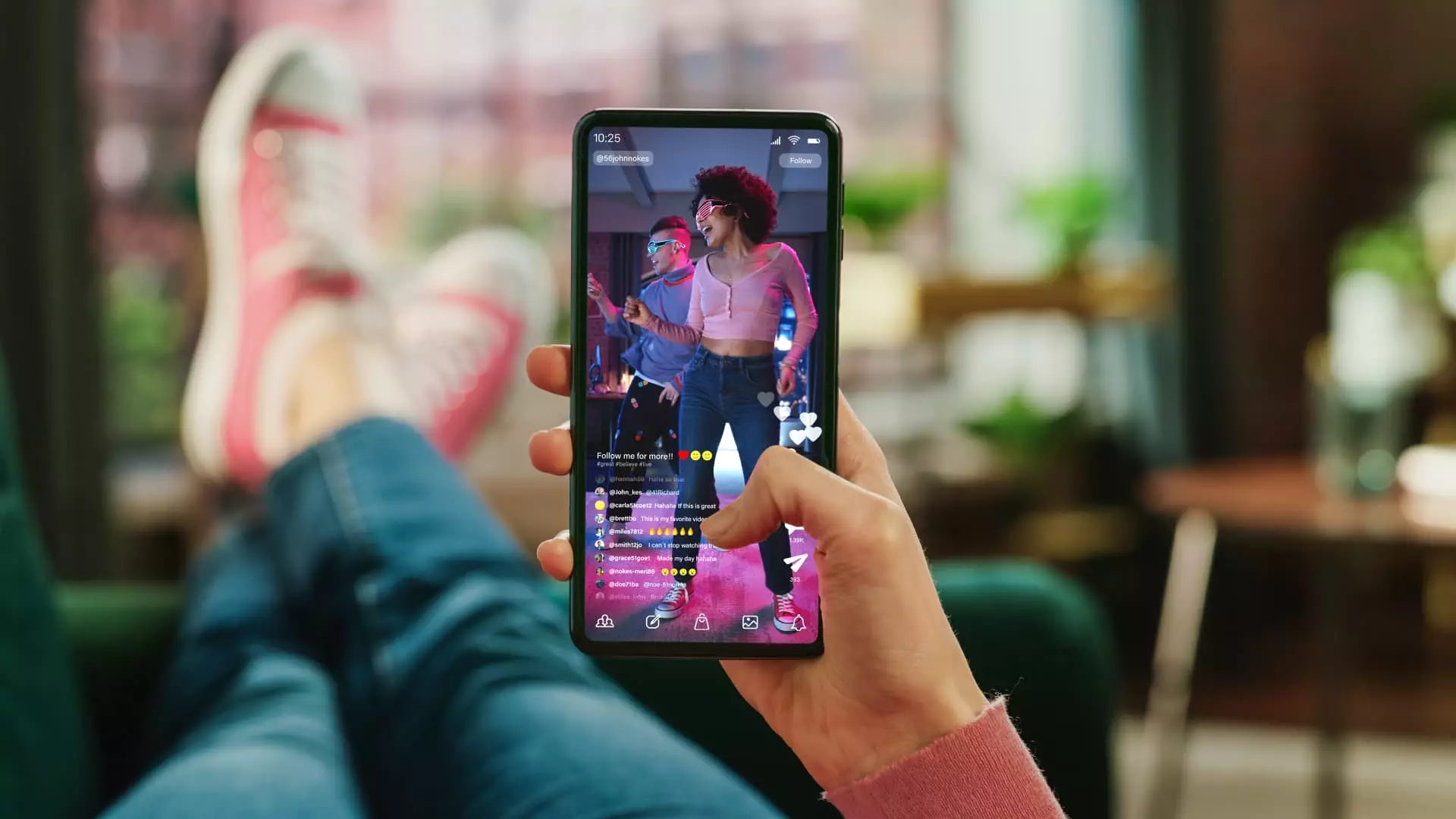Since its global debut in 2016, TikTok has established itself as an indomitable force in the short-form video landscape. Owned by ByteDance, the platform has garnered over 1.12 billion monthly active users worldwide, a startling figure that demonstrates its widespread appeal. With American users dedicating an average of 108 minutes a day to scrolling through its reels, TikTok is not just another social media platform; it has become an integral part of digital life, particularly for younger audiences. Experts recognize that TikTok epitomizes the shift in social media, where brevity and entertainment collide to create an addictive experience.
Jasmine Enberg, a leading analyst at Emarketer, encapsulates TikTok’s influence succinctly: “It is the center of the internet for young people.” Unlike any of its predecessors, TikTok has become a multifaceted hub for entertainment, news, trends, and even shopping. In a landscape fraught with competing platforms, TikTok sets a pace that rivals struggle to match. This is not merely about social media; it is about reshaping how we consume and interact with content.
Competitors in a Tight Race
In a bid to contend with TikTok’s growing allure, major tech players like Meta and Google have scrambled to enhance their short-form video offerings. Instagram Reels and YouTube Shorts have both seen aggressive expansions, laden with new features and creator tools. Even platforms like LinkedIn are now experimenting with TikTok-esque feeds, demonstrating that the app’s reach extends into unexpected territories. These companies are not just reacting to TikTok; they are pivoting their very essence to capture an audience that is increasingly drawn to fleeting moments of entertainment.
Despite these attempts, TikTok’s unique algorithm and user engagement model continue to elude its competitors. The precision of TikTok’s recommendation engine allows it to showcase content tailored perfectly to individual users, keeping them engaged longer than any other platform can manage. While Instagram and YouTube strive to innovate, the sheer gravitational pull of TikTok is difficult to counteract.
The Psychological Impact of Endless Scrolling
While TikTok’s influence grows, it comes with a shadowy side that merits discussion. The rise of short-form content consumption raises concerns about its psychological ramifications, particularly among younger demographics. Experts have documented rising instances of anxiety and disrupted sleep patterns attributed to the addictive nature of platforms that promote infinite scrolling. Dr. Yann Poncin from Yale’s Child Study Center remarks, “Infinite scrolling and short-form video are designed to capture your attention in short bursts.” This new form of entertainment seems to prioritize superficial engagement over deep storytelling, leading to a diminished capacity for sustained focus.
As content consumption transforms from the journey of watching a film or series to a frenetic dash through snippets, there is legitimate fear regarding its impact on mental health. In an environment where users are conditioned to expect content that captures attention in seconds, we must question the long-term effects on cognitive function and emotional well-being.
Monetization Challenges Amidst Popularity
Despite TikTok’s burgeoning user base and engagement levels, monetizing this content remains a formidable challenge. Short-form videos provide limited advertising space, making it difficult for brands to capitalize on the potential reach offered by viral clips. Although TikTok reportedly generated $23.6 billion in ad revenue last year, many creators find the financial rewards lackluster. For instance, YouTube Shorts compensates creators at roughly four cents per 1,000 views, a stark contrast to the higher profit potential associated with traditional long-form engagement.
Platform-specific innovations, like Instagram’s “Trial Reels,” represent attempts to foster creator experimentation and growth. But monetization strategies remain a work in progress for many, especially as brands navigate the complexities of connecting with their target audience through these brief glimpses of content.
Opportunity Amid Scrutiny
The growing scrutiny surrounding TikTok, particularly its ownership ties to China, presents both challenges and opportunities for its competitors. Should regulatory actions be imposed, platforms like Meta and YouTube are positioned to capture a significant portion of advertising dollars that may be displaced. eMarketer’s forecast suggests they could seize up to 50% of this revenue, illustrating the delicate balance of competition and regulation in the tech industry.
In a rapid technological landscape where algorithms define user experience, TikTok’s phenomenal rise showcases the power of innovation. However, as competitors evolve their strategies and markets react to potential bans, the ramifications for digital engagement are far-reaching, setting the stage for an intriguing future.


Leave a Reply